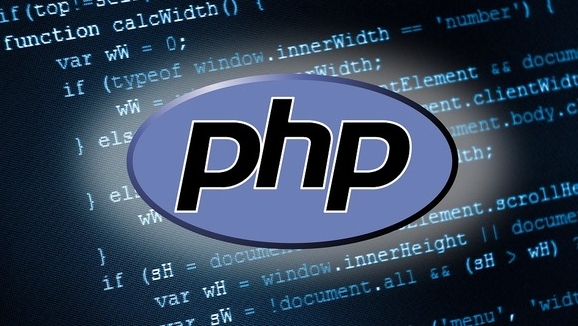To return JSON from a PHP function, use json_encode() to convert data, set the correct header, handle errors, and manage array/object outputs. 1. Use json_encode() to convert associative arrays or objects into a JSON string. 2. Set the Content-Type: application/json header when outputting JSON to ensure proper interpretation. 3. Handle encoding errors using json_last_error() and avoid unserializable data like resources. 4. Control whether JSON is returned as an object or array based on typecasting needs.

Returning JSON from a PHP function is straightforward once you understand how to structure and encode the data properly. The key steps involve preparing your data, using the right PHP functions to convert it into JSON format, and making sure headers are set correctly if you're sending it to a browser or API client.

1. Use json_encode() to Convert Data to JSON
PHP provides a built-in function called json_encode() that converts a PHP array (or object) into a JSON string. This is the core part of returning JSON from a function.

function get_data() {
$data = [
'name' => 'Alice',
'age' => 30,
'is_admin' => true
];
return json_encode($data);
}This function will return a string like:
{"name":"Alice","age":30,"is_admin":true}Make sure your data types are compatible — for example, PHP booleans become lowercase JSON booleans (
true/false), andnullbecomesnull.
2. Set the Correct Header When Outputting JSON
If you're sending this JSON to a browser or an API consumer (like a JavaScript frontend), you should set the content type header to application/json. This tells the receiving end how to interpret the response.
header('Content-Type: application/json');
echo get_data();If you're calling this function inside another script or API endpoint, make sure nothing else outputs text before or after the JSON — even a space or error message can break the JSON format.
3. Handle Errors Gracefully
Sometimes, your data might not be JSON-encodable — for example, if it contains circular references or special objects. You can check for errors using json_last_error():
function get_data_safe() {
$data = ['important_data' => 'secret', 'resource' => fopen('file.txt', 'r')];
$json = json_encode($data);
if ($json === false) {
return json_encode(['error' => 'JSON encoding failed']);
}
return $json;
}Common issues:
- Resources like file handles or database connections can't be encoded.
- UTF-8 characters need proper handling — use
mb_convert_encoding()orjson_encode($data, JSON_UNESCAPED_UNICODE)if needed.
4. Return Associative Arrays or Objects Based on Need
By default, json_encode() will turn associative arrays into JSON objects and indexed arrays into JSON arrays. If you want to force an object, pass an empty array as an object:
$data = [];
echo json_encode((object)$data);
// Outputs: {}Or keep it as an array:
echo json_encode([]); // Outputs: []
This distinction matters when your frontend expects a specific structure.
That's basically all there is to it. It’s not complicated, but getting the details right — especially around headers and data formatting — makes all the difference.
The above is the detailed content of How to return JSON from a PHP function?. For more information, please follow other related articles on the PHP Chinese website!

Hot AI Tools

Undress AI Tool
Undress images for free

Undresser.AI Undress
AI-powered app for creating realistic nude photos

AI Clothes Remover
Online AI tool for removing clothes from photos.

Clothoff.io
AI clothes remover

Video Face Swap
Swap faces in any video effortlessly with our completely free AI face swap tool!

Hot Article

Hot Tools

Notepad++7.3.1
Easy-to-use and free code editor

SublimeText3 Chinese version
Chinese version, very easy to use

Zend Studio 13.0.1
Powerful PHP integrated development environment

Dreamweaver CS6
Visual web development tools

SublimeText3 Mac version
God-level code editing software (SublimeText3)
 PHP Variable Scope Explained
Jul 17, 2025 am 04:16 AM
PHP Variable Scope Explained
Jul 17, 2025 am 04:16 AM
Common problems and solutions for PHP variable scope include: 1. The global variable cannot be accessed within the function, and it needs to be passed in using the global keyword or parameter; 2. The static variable is declared with static, and it is only initialized once and the value is maintained between multiple calls; 3. Hyperglobal variables such as $_GET and $_POST can be used directly in any scope, but you need to pay attention to safe filtering; 4. Anonymous functions need to introduce parent scope variables through the use keyword, and when modifying external variables, you need to pass a reference. Mastering these rules can help avoid errors and improve code stability.
 How to handle File Uploads securely in PHP?
Jul 08, 2025 am 02:37 AM
How to handle File Uploads securely in PHP?
Jul 08, 2025 am 02:37 AM
To safely handle PHP file uploads, you need to verify the source and type, control the file name and path, set server restrictions, and process media files twice. 1. Verify the upload source to prevent CSRF through token and detect the real MIME type through finfo_file using whitelist control; 2. Rename the file to a random string and determine the extension to store it in a non-Web directory according to the detection type; 3. PHP configuration limits the upload size and temporary directory Nginx/Apache prohibits access to the upload directory; 4. The GD library resaves the pictures to clear potential malicious data.
 Commenting Out Code in PHP
Jul 18, 2025 am 04:57 AM
Commenting Out Code in PHP
Jul 18, 2025 am 04:57 AM
There are three common methods for PHP comment code: 1. Use // or # to block one line of code, and it is recommended to use //; 2. Use /.../ to wrap code blocks with multiple lines, which cannot be nested but can be crossed; 3. Combination skills comments such as using /if(){}/ to control logic blocks, or to improve efficiency with editor shortcut keys, you should pay attention to closing symbols and avoid nesting when using them.
 How Do Generators Work in PHP?
Jul 11, 2025 am 03:12 AM
How Do Generators Work in PHP?
Jul 11, 2025 am 03:12 AM
AgeneratorinPHPisamemory-efficientwaytoiterateoverlargedatasetsbyyieldingvaluesoneatatimeinsteadofreturningthemallatonce.1.Generatorsusetheyieldkeywordtoproducevaluesondemand,reducingmemoryusage.2.Theyareusefulforhandlingbigloops,readinglargefiles,or
 Tips for Writing PHP Comments
Jul 18, 2025 am 04:51 AM
Tips for Writing PHP Comments
Jul 18, 2025 am 04:51 AM
The key to writing PHP comments is to clarify the purpose and specifications. Comments should explain "why" rather than "what was done", avoiding redundancy or too simplicity. 1. Use a unified format, such as docblock (/*/) for class and method descriptions to improve readability and tool compatibility; 2. Emphasize the reasons behind the logic, such as why JS jumps need to be output manually; 3. Add an overview description before complex code, describe the process in steps, and help understand the overall idea; 4. Use TODO and FIXME rationally to mark to-do items and problems to facilitate subsequent tracking and collaboration. Good annotations can reduce communication costs and improve code maintenance efficiency.
 How to access a character in a string by index in PHP
Jul 12, 2025 am 03:15 AM
How to access a character in a string by index in PHP
Jul 12, 2025 am 03:15 AM
In PHP, you can use square brackets or curly braces to obtain string specific index characters, but square brackets are recommended; the index starts from 0, and the access outside the range returns a null value and cannot be assigned a value; mb_substr is required to handle multi-byte characters. For example: $str="hello";echo$str[0]; output h; and Chinese characters such as mb_substr($str,1,1) need to obtain the correct result; in actual applications, the length of the string should be checked before looping, dynamic strings need to be verified for validity, and multilingual projects recommend using multi-byte security functions uniformly.
 Quick PHP Installation Tutorial
Jul 18, 2025 am 04:52 AM
Quick PHP Installation Tutorial
Jul 18, 2025 am 04:52 AM
ToinstallPHPquickly,useXAMPPonWindowsorHomebrewonmacOS.1.OnWindows,downloadandinstallXAMPP,selectcomponents,startApache,andplacefilesinhtdocs.2.Alternatively,manuallyinstallPHPfromphp.netandsetupaserverlikeApache.3.OnmacOS,installHomebrew,thenrun'bre
 Learning PHP: A Beginner's Guide
Jul 18, 2025 am 04:54 AM
Learning PHP: A Beginner's Guide
Jul 18, 2025 am 04:54 AM
TolearnPHPeffectively,startbysettingupalocalserverenvironmentusingtoolslikeXAMPPandacodeeditorlikeVSCode.1)InstallXAMPPforApache,MySQL,andPHP.2)Useacodeeditorforsyntaxsupport.3)TestyoursetupwithasimplePHPfile.Next,learnPHPbasicsincludingvariables,ech







